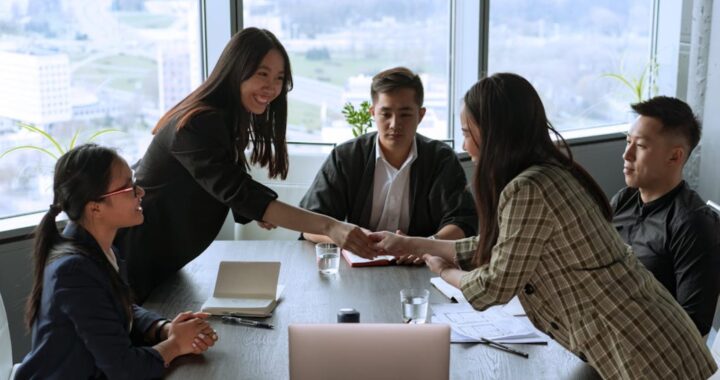
The Risks of In-N-Out – How to Invest in In-N-Out
How to Invest in In-N-Out
As an expert in investing, I have delved into the subject of In-N-Out and its associated risks. In this article, I aim to shed light on the potential pitfalls that come with investing in In-N-Out, while also providing guidance on how to approach it intelligently.
When considering the risks of investing in In-N-Out, one cannot overlook the highly competitive nature of the fast food industry. With numerous established players vying for market share, newcomers face significant challenges in gaining a foothold. This intense competition can lead to slower growth rates and decreased profitability for companies like In-N-Out.
Furthermore, it is crucial to consider the potential impact of changing consumer preferences and dietary trends. As society becomes more health-conscious and environmentally aware, there is a growing demand for healthier eating options and sustainable practices. If In-N-Out fails to adapt to these evolving trends, it could face a decline in customer loyalty and ultimately suffer financially.
Understanding the In-N-Out Franchise
When it comes to investing in a franchise, understanding the ins and outs of the business is crucial. And that holds true for In-N-Out as well. As one of the most popular fast-food chains in the United States, In-N-Out has garnered a loyal customer base and generated significant profits over the years. However, before considering investing in this iconic burger joint, it’s essential to be aware of both the potential rewards and risks involved.
- Strong Brand Identity: One of the key factors that have contributed to In-N-Out’s success is its strong brand identity. With its classic menu offerings and commitment to quality ingredients, In-N-Out has carved out a niche for itself in an industry dominated by giants like McDonald’s and Burger King. The company’s reputation for fresh food made to order has helped build trust with customers and fostered a sense of loyalty.
- Limited Expansion Opportunities: While In-N-Out’s brand recognition remains high, it’s important to note that its expansion efforts have been relatively conservative compared to other fast-food chains. Currently, most In-N-Out locations are concentrated on the West Coast of the United States, which limits growth opportunities in other regions. This limited geographic footprint may impact potential investors looking for broader market exposure.
- Intense Competition: The fast-food industry is highly competitive, with new players constantly entering the market. Despite its strong brand presence, In-N-Out faces fierce competition from both national chains and local competitors alike. Staying ahead requires continuous innovation, adapting to changing consumer preferences, and effectively managing operational challenges.
- Operational Considerations: Investing in any franchise requires careful consideration of operational aspects such as supply chain management, staffing requirements, quality control standards, and maintaining consistency across locations. These factors can significantly impact profitability and customer satisfaction levels.
- Economic Factors: Like any business venture, economic conditions play a role in determining success or failure. Factors such as inflation, fluctuations in commodity prices, labor costs, and consumer spending patterns can all affect the profitability of an In-N-Out franchise.

The Pros and Cons of Investing in In-N-Out
When it comes to investing in In-N-Out, there are both potential benefits and risks that investors should consider. Let’s delve into the pros and cons of putting your money into this popular fast-food chain.
Pros:
- Strong Brand Recognition: In-N-Out is a well-established brand with a loyal customer base. Its reputation for quality food and exceptional service has helped it garner a devoted following over the years. This brand recognition could potentially translate into steady revenue streams for investors.
- Consistent Growth: In-N-Out has experienced consistent growth, expanding its presence across different states in recent years. With plans for further expansion on the horizon, investing in this company could offer opportunities for long-term growth.
- Simple yet Effective Business Model: One of the strengths of In-N-Out is its straightforward business model focused on offering limited menu options and maintaining high-quality standards. This simplicity allows for efficient operations and cost management, which can be appealing to investors seeking stability.
Cons:
- Regional Concentration: While In-N-Out has been successful within its current markets, it primarily operates in specific regions of the United States, limiting its geographic reach compared to other fast-food chains such as McDonald’s or Burger King. This regional concentration poses a risk as economic downturns or changes in consumer preferences within these areas could impact the company’s performance.
- Intense Competition: The fast-food industry is highly competitive with numerous players vying for customers’ attention and dollars. In-N-Out faces competition not only from national chains but also from local burger joints in each market it serves. Sustaining market share amidst fierce competition can be challenging and may affect profitability.
- Limited Menu Innovation: While some customers appreciate In-N-Out’s classic menu offerings, others might desire more variety or healthier options. The company’s reluctance to introduce new items regularly may limit its appeal to certain demographics or evolving market trends.





